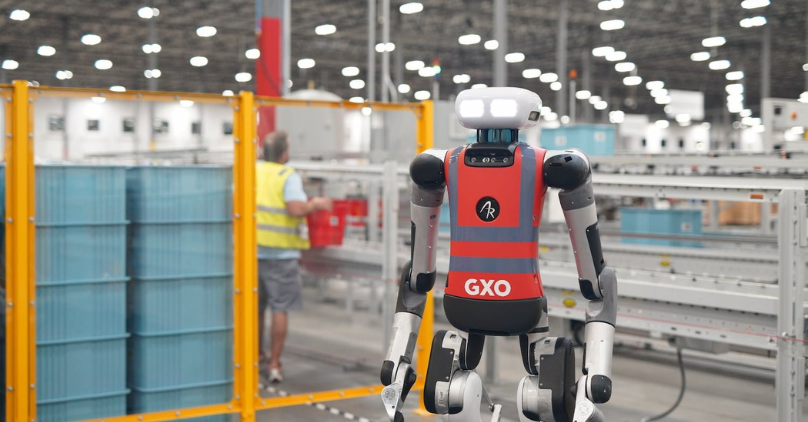
Just last week, Tech Funding News technology discussed Neuralink’s brain chip tech, which aims to redefine human-machine interaction and neurological treatments in the brain-computer interface industry. Today, we decided to explore something even more impressive — Digit, one of the first humanoid autonomous robots for warehouses developed by Agility Robotics. In October 2024, the robotics unicorn secured $150 million in Series C funding from DCVC, reaching a $1 billion valuation.
Here are five things you should know about Digit and how it stands out from Atlas (Boston Dynamics), Optimus (Tesla), Figure 01 (Figure AI), Apollo (Apptronik), Project GROOT (NVIDIA), and Sanctuary AI.
Design and functionality: bipedal structure, “backward” legs, and Linux-based operating system
Digit stands out from its competitors with its unique design for logistics and warehousing tasks — sorting, lifting, and transporting packages. Its bipedal design enables navigation through warehouses and factories where traditional wheeled robots face limitations due to spatial constraints.
A stand-out feature, however, is Digit’s “backward” legs design, reminiscent of ostrich legs. This configuration enables movement in tight spaces and stair climbing while allowing deeper reach into shelving units and better interaction with human-centric infrastructure. At the same time, Digit’s arms serve dual purposes: balance and manipulation. They’re designed for lifting, carrying, and placing items, mimicking human-like movements and maximising their effectiveness in human-designed environments.
Furthermore, the robot runs on a Linux-based real-time operating system powered by dual Intel i7 processors. The processing capability drives advanced control algorithms for balance and stability during complex tasks. Digit can also integrate additional computing resources to enhance its perception and machine learning capabilities.
Digit is fully autonomous, thanks to AI and LLMs
Unlike robots that need constant human guidance, Digit operates independently. In other words, the robot performs tasks without continuous human input, making it integral in environments where labour shortages are prevalent, such as logistics and warehousing.
In terms of technology, Digit’s training incorporates advanced AI techniques, including large language models (LLMs), allowing the robot to adapt to various workflows and environments and handle daily tasks independently. Its environmental learning capability further enhances its operational flexibility.
Digit’s sensors: LiDAR and depth cameras
Digit features an advanced sensor array, including LiDAR, depth, and stereo camera, enabling accurate environmental perception and complex navigation. The LiDAR system, in particular, detects distant obstacles, while depth cameras map local terrain, allowing real-time adaptation to various surfaces and obstacles.
Simply put, the sensory suite allows object recognition and environmental mapping for tasks like picking and placing items in logistics settings. In addition to visual sensors, Digit incorporates acoustic sensors that facilitate voice command recognition. However, due to the noisy conditions in factory settings, commands are typically issued through an iPad interface rather than voice commands alone.
GXO Logistics and Amazon have already deployed Digit
In 2023, Agility Robotics partnered with GXO Logistics in a multi-year agreement — marking the first commercial deployment of humanoid robots in logistics and introducing the first Robotics-as-a-Service (RaaS) model for humanoid robots. Digit now operates fully, transferring totes between autonomous mobile robots (AMRs) and conveyor systems.
Amazon has also begun testing Digit at its robotics research facility near Seattle. This initiative explores how humanoid robots can support logistics operations, particularly in repetitive tasks. At Amazon, Digit primarily assists with tote recycling—handling empty totes after inventory picking.
Agility Robotics plans for 2025: safety features, self-recharging, and self-replication
Agility Robotics is enhancing Digit’s collaborative safety features for better human-robot interaction. New sensing technologies will detect human presence and adjust movements to prevent accidents, creating a safer work environment. The company also focuses on improved battery efficiency and developing self-recharging capabilities, allowing Digit to seek charging stations when needed autonomously.
Perhaps the most ambitious goal is to enable Digit to construct future versions of itself. This involves advanced AI and robotics technologies that could transform manufacturing costs and scale production capabilities.
The post Future of work: 5 things to know about Agility Robotics’ Digit, a humanoid autonomous robot disrupting warehouses appeared first on Tech Funding News.
